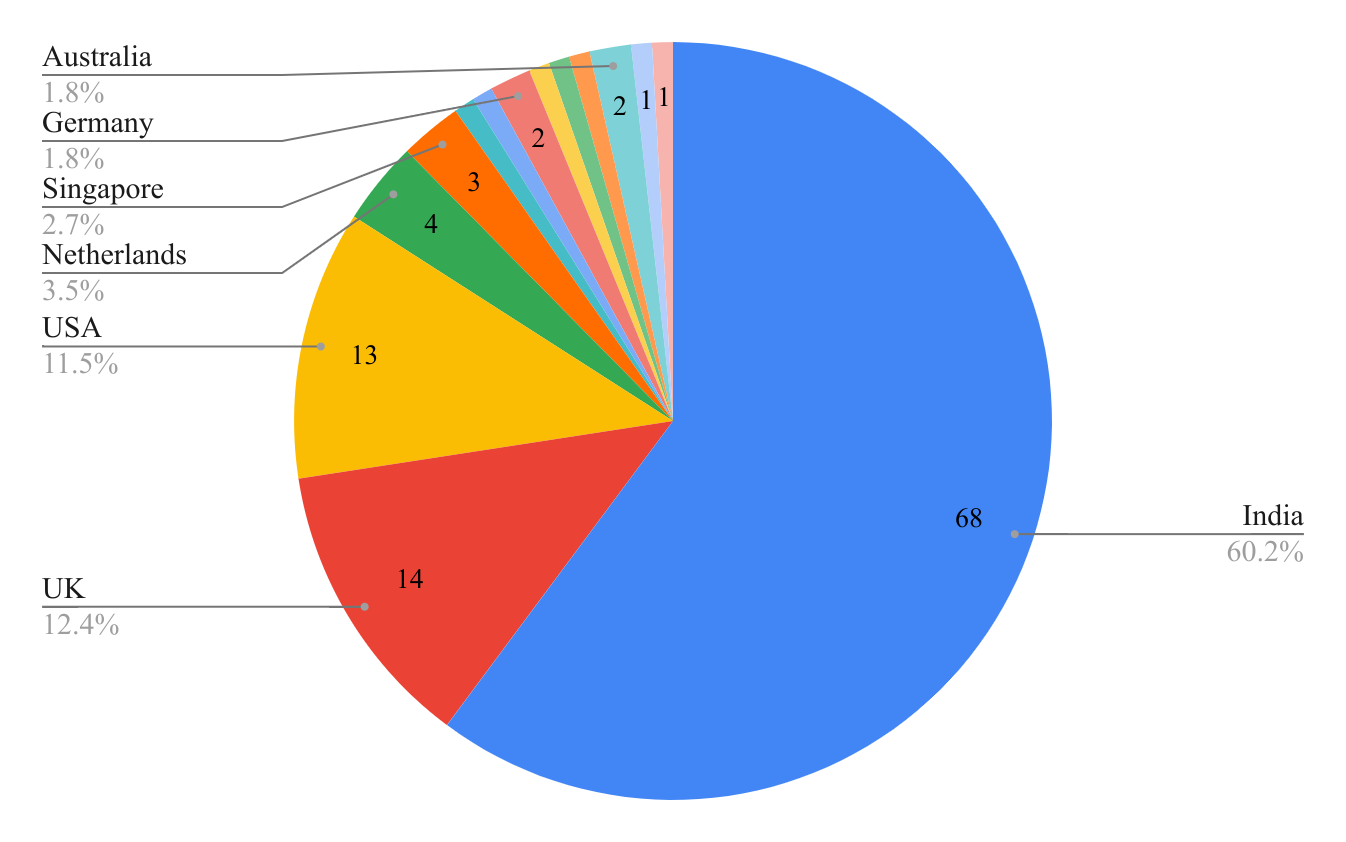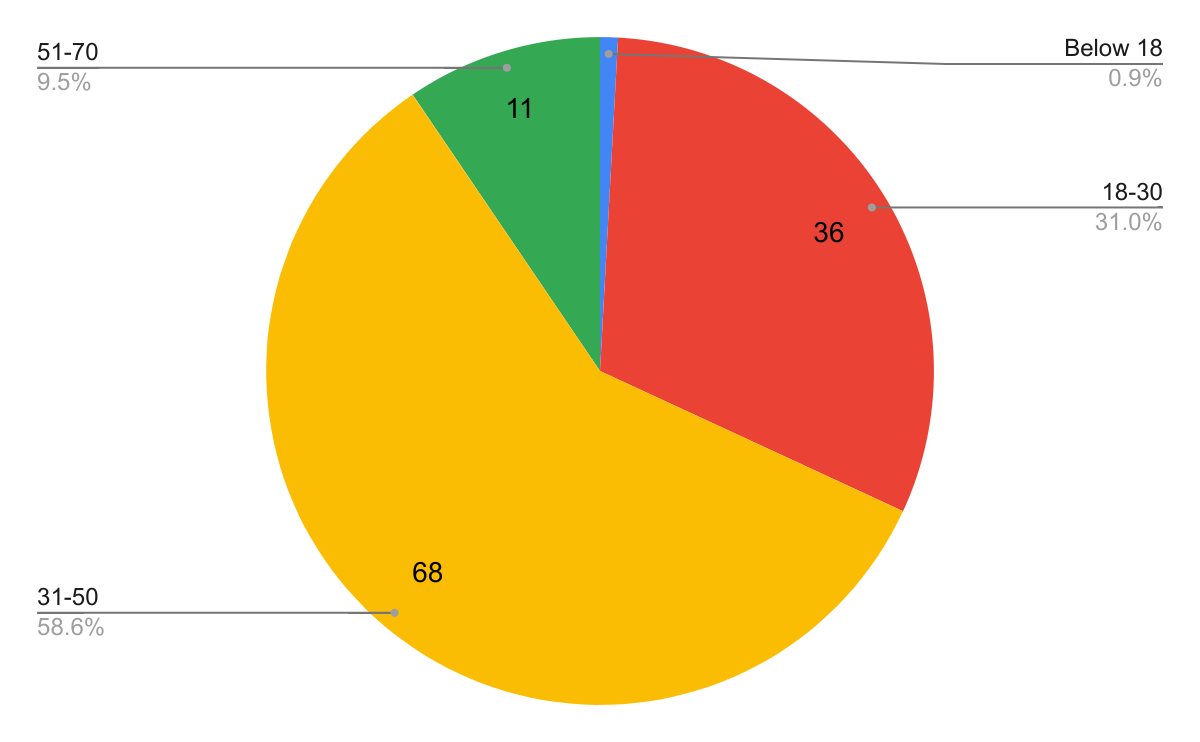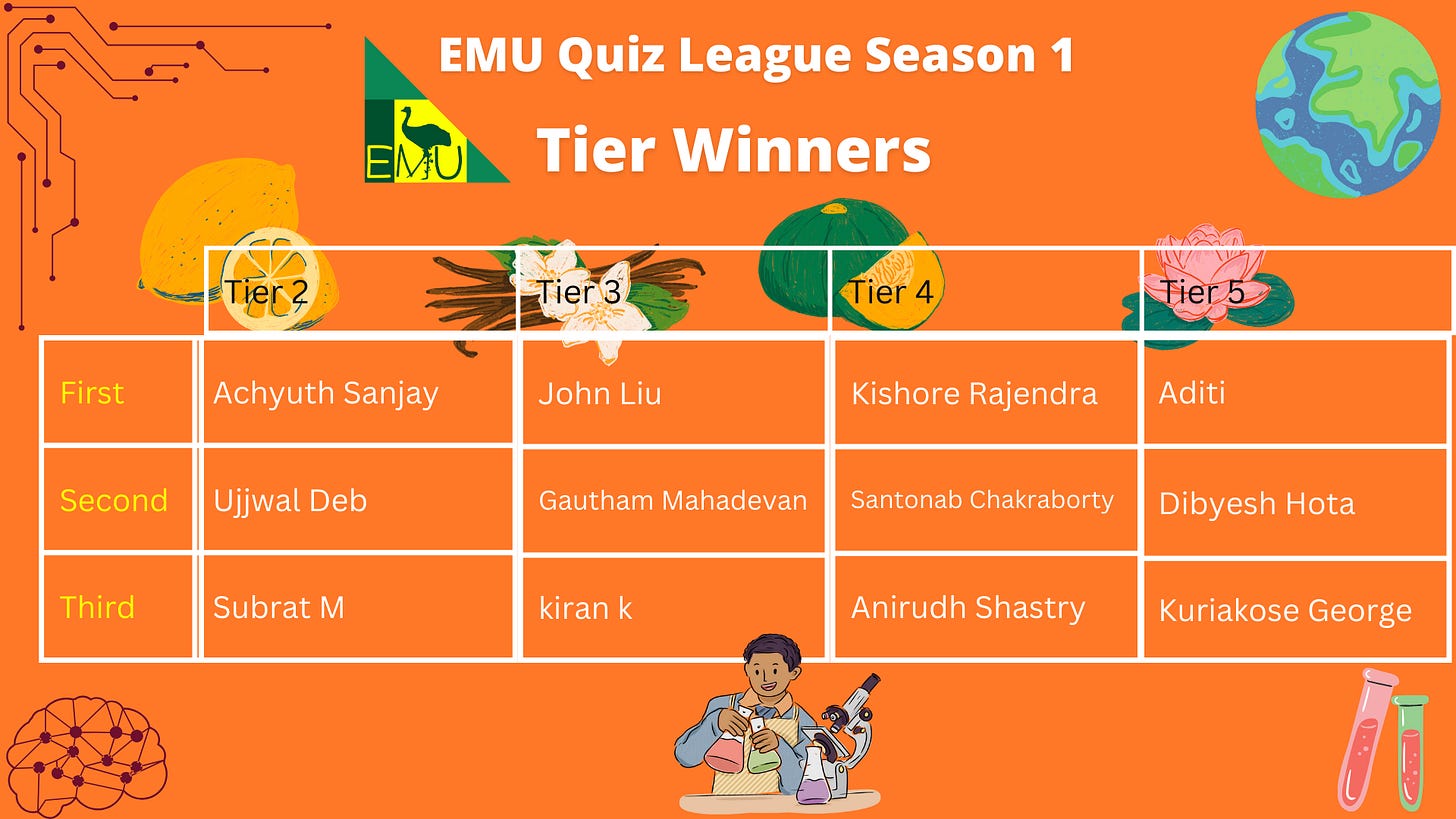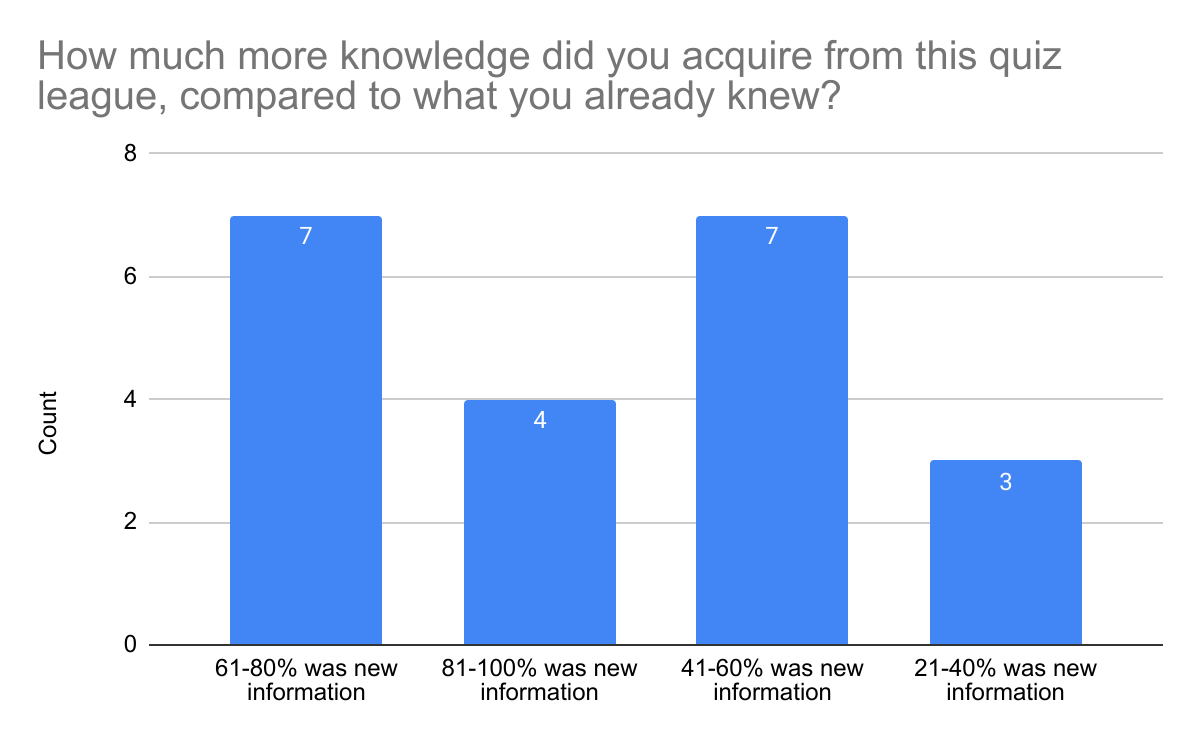Overview of EMU Season 1
Here are some stats and details of the first season of the league
The first season ran from 26th September 2023 to 5th December 2023 (approx. 71 days). The number of days in each game-week was increased from 7 to 9 days to allow maximum participation after the second game-week, and nearly reduced to 8 days in the last two game-weeks.
During the 8 game-weeks, we had a total of 230 games (2 other games in the fixtures unfortunately did not happen due to scheduling and timing conflicts, both surprisingly during the first game-week with 9 days). Including spares (and initially tie-breakers and ‘Hawk-eye’ questions), a total of 411 questions (48 × 8 = 384 questions as main questions and 27 others as tiebreakers or spares) were played during the first season.
For the first season of the EMU nature, science and technology quiz league, we had a total of 116 participants (117 if we count an exchange of seats midway), out of which 92.24% (n=107) were familiar with the mimir format, while only 7.76% (n=9) haven’t had played this format before. We were happy to introduce this fun format to the uninitiated. Given that an international mimir league usually has anywhere between 200-400 players per season, but the theme for our league usually represents just around 6-13% every week in such general leagues, that’s an exceptionally great turn out.
We had players joining us from 14 countries, as you can see in the pie chart. As you can see, most players were joining from India, followed by the UK, and then the USA. Besides the countries labelled in the chart, we had one player each from South Korea, Malaysia, Thailand, Lithuania, France, Switzerland, and Canada.
The following chart shows the age-wise distribution. Since we had a poor turnout of players under 18 years of age (and poor attendance during the league), we are keeping an age cut-off of 18 years starting next season, unless there are a good amount of requests from players under 18. As you can see, most players were between 31-50 years of age, followed by the 18-30 age category, and then by 51-70 age category.
The following are the grand (Tier 1) champions of season one:
The following are the other Tier champions of season one:
The following are the top 5 in various metrics of the season:
Players with the highest weekly Adjusted Differential Scores (ADS):
Eric Mukherjee - 14.18
Adheesh Ghosh - 12.87
manoj saranathan - 11.89
Seoan Webb - 11.42
Ishaan Nejeeb - 11.09
Players with the highest overall Adjusted Differential Scores (ADS):
Eric Mukherjee - 71.13
Pat Gibson - 65.1625
manoj saranathan - 61.2525
Samanth Subramanian - 60.48
Jimmy Li - 60.02
Players with the highest weekly points:
Eric Mukherjee - 34
Gautham Mahadevan - 28
Ian Bayley - 22
Sanskriti Dawle - 21
Sangeeth S V and Eric Mukherjee - 20
Players with the highest overall points:
Eric Mukherjee - 133
Samanth Subramanian and Aditya Gangrade - 105
Pat Gibson - 102
Jayakanthan R - 100
manoj saranathan and Jimmy Li - 99
Players with the highest Bonus attempts % (Correct answers during bonus attempts/No. of bonus attempts). This measure indicates very cautious and strategic gameplay:
Sarah Trevarthen - 92.11 %
Rajagopal - 91.67 %
Samanth Subramanian - 91.49 %
Jayakanthan R - 88.24 %
Sanat Pai Raikar - 84.31 %
Players with the least Xs in their seat i.e. players with the least amount of unanswered questions in their seat (this indicates higher amount of answering of questions by the players in their own seats):
Pat Gibson - 9 questions
Eric Mukherjee - 10 questions
Jimmy Li - 10 questions
Reitesh Raman - 11 questions
Aditya Gangrade - 11 questions
Here’s some statistics on how much of the information from the league was new to a sample of participants:
Here are the theme-wise quads from season 1 (arranged from week 1 to 8):
Physical geography:
National Parks in Jammu and Kashmir
Visiting famous waterbodies
Islands of Greece
Types of coral reefs
Areography
Geography in avian binomial nomenclature
RS & GIS
Geography of major tectonic plates
History and Literature:
Colonial nomenclature of butterflies in India
Merchants of Doubt
Fiction with mammals having 'ole' nomenclature
Historic crashes and explosions
Birds in fiction
Lippershey and optical instruments
Academic publishing
David Quammen’s non-fiction
Biology:
Biology of Bateleur Eagles
Title of medical papers
Women in genetics
Biomolecules
Venom and poison
Twin-related terms
Animal locomotion
Sterilisation-focused veterinary practices
Chemistry:
Materials and their Moh’s scale of hardness
Alloys
Chemical reactions
Food Preservation
Environmental toxicology involving birds
Carbon cycle
The Nobel Prize in Chemistry 2023
Chemistry in Breaking Bad
Physics:
Elementary particles
Waves
Tesla’s ideas
Astroparticle Physics
Space probes and space sounds
Fundamental constants
Fluid Dynamics
The Nobel Prize in Physics 2023
Engineering and Technology:
Artificial Intelligence
Technology in electric vehicles
Internet of Things
Technology in Anime
Pickup trucks
Tools used in molecular biology
Boston Dynamics
Integrated Engineering Concepts
Math:
Eponymously named fractal concepts
Famous math problems
The Great Trigonometric Survey of India
The Cult of Statistical Significance
Geometry
Hindustani music and prime numbers
Branches of algebra
Math in The Big Bang Theory
Movies and TV:
Contact
Curie in Radioactive
Reptiles in James Bond movies
Sound effects in Star Wars
Flowers in Bollywood
The IT Crowd
Animals in 12 Monkeys
Mr. Robot
Music, Art and Architecture:
Volcanoes in paintings
Architecture in science-fiction movies
Molecular music
Scientific art of Da Vinci
Green Features in Sports Venues
Birdsong and compositions
Microbial Art
UtopicDystopic mega-projects in deserts
Mythbusting:
Flat Earth
Sugary myths
James Randi
Why Darwin Matters
Dietary Myths
Venus and Dr. Velikovsky
Sadhguru’s psuedoscience
Ancient aliens
11. Social Science and Psychology:
Psychology of argumentation
Anthropology
Psychological experiments
Ethical questions in conservation
Mental illnesses of famous people
Nobel Prize in Economic Sciences
Psychoacoustics
Unreplicated social science studies
Home and Hobbies:
Gardening and gradient studies
Computer languages and games
Philately of Mangroves
Home appliances
Camping materials
Photography in naming of organisms
Home safety
Bird homes (nests)






